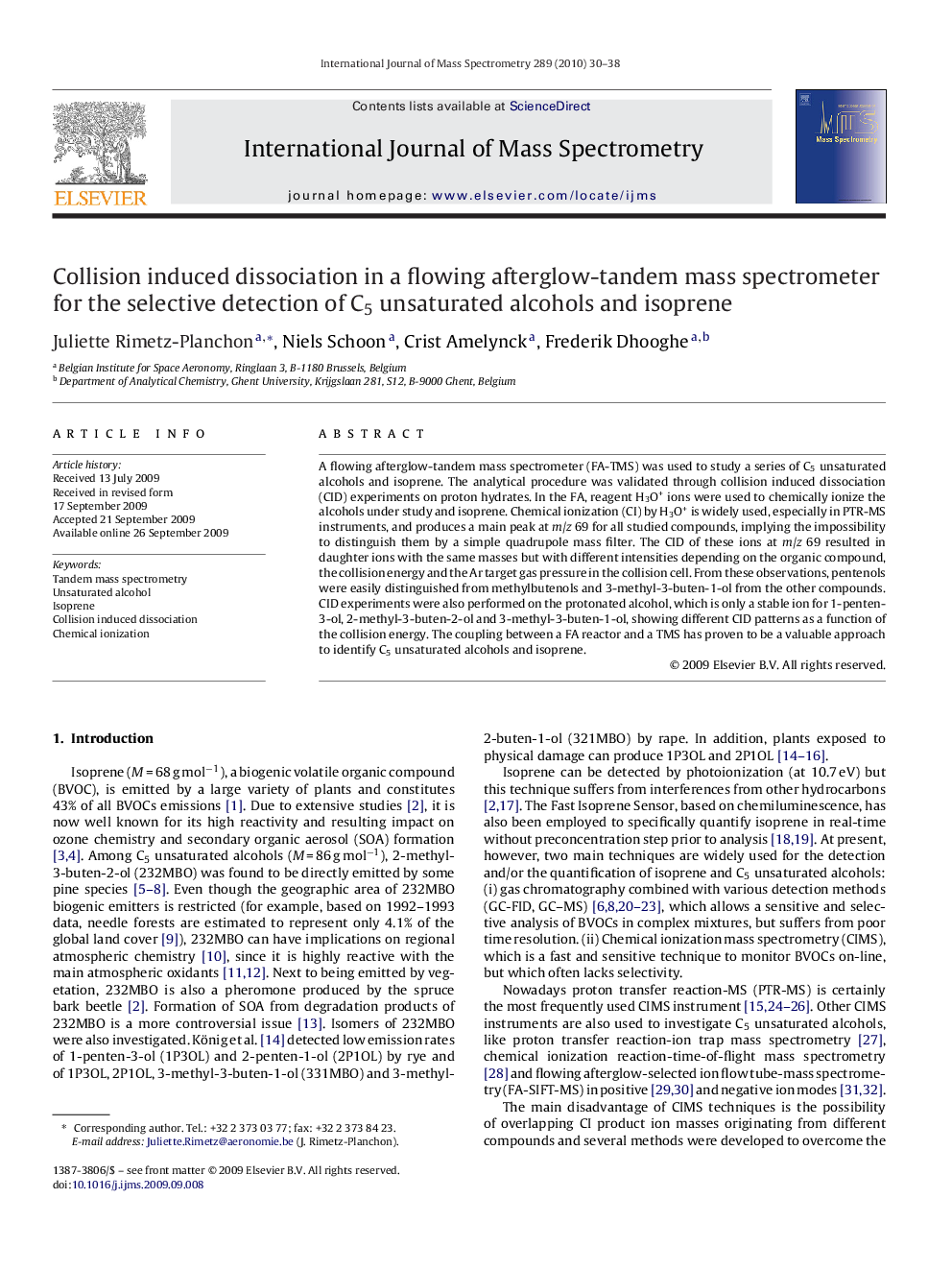| Article ID | Journal | Published Year | Pages | File Type |
|---|---|---|---|---|
| 1193917 | International Journal of Mass Spectrometry | 2010 | 9 Pages |
A flowing afterglow-tandem mass spectrometer (FA-TMS) was used to study a series of C5 unsaturated alcohols and isoprene. The analytical procedure was validated through collision induced dissociation (CID) experiments on proton hydrates. In the FA, reagent H3O+ ions were used to chemically ionize the alcohols under study and isoprene. Chemical ionization (CI) by H3O+ is widely used, especially in PTR-MS instruments, and produces a main peak at m/z 69 for all studied compounds, implying the impossibility to distinguish them by a simple quadrupole mass filter. The CID of these ions at m/z 69 resulted in daughter ions with the same masses but with different intensities depending on the organic compound, the collision energy and the Ar target gas pressure in the collision cell. From these observations, pentenols were easily distinguished from methylbutenols and 3-methyl-3-buten-1-ol from the other compounds. CID experiments were also performed on the protonated alcohol, which is only a stable ion for 1-penten-3-ol, 2-methyl-3-buten-2-ol and 3-methyl-3-buten-1-ol, showing different CID patterns as a function of the collision energy. The coupling between a FA reactor and a TMS has proven to be a valuable approach to identify C5 unsaturated alcohols and isoprene.
Graphical abstractBased on selective chemical ionization and collision induced dissociation of ions, six unsaturated C5 alcohols and isoprene were identified by flowing afterglow-tandem mass spectrometry.Figure optionsDownload full-size imageDownload as PowerPoint slide
